We think we understand many of the reasons artists create. For some it’s to access the deepest parts of themselves. For others it’s to find answers to questions that haunt. And for still other performers and visual artists, writers…it’s to connect more profoundly with the larger community.
Yet there is still a mystery that surrounds the creative process itself: Just what is going on in these fertile and visionary minds? What enables a person to take their most personal ideas, challenges, and then stretch, beat and form them into something authentic, new and fine–something that in turn becomes meaningful to others?
This is the question I raised to painter Agostino Arrivabene of Milan, Italy; paper engineer, Matthew Shlian of Michigan, USA; painter Fotini Hamidieli, in Veria, Imathia, Greece; and pop singer-composer, Isolda of London, England.
Here is what they shared:
Agostino Arrivabene, Milan, Italy:
“My life has been characterized by tragic events since early childhood. My mother suddenly died when I was four years old and my father, although a very sound man and a good educator, created around him an atmosphere that denied life and was haunted by death. This nearness to death taught me to release any taboo about it, and has shown me new lands and new ways of considering life. Just like Persephone who, taken to the underworld by Hades, discovers a new dimension, swinging between two dimensions that are deeply entangled. Persephone gets to know the perennial struggle between the opposites: life and death, love and sorrow, light and darkness. So death became for me the way to amazement and wonder.
“I think each of my emotions translates into signs, shapes and colors. Since the beginning I have engraved in myself the technical expertise that is necessary to express my most inner, concealed, and secluded voices. From an unshaped matrix I have created the images that form the basis of my personal style, which was given to me as a gift since my early childhood through the powerful and sublime suggestions of the ancient artists, especially that of Leonardo da Vinci. He constituted the arch between my talent and the Weltanschauung – perhaps the same Leonardo had – that was sprouting in me from the very beginning.”
“Technical expertise has always charmed me, because it is necessary to create handsome figures: painting technique is very similar to the way of the anatomist through the beauty of death; he grazes to the bone and then recomposes the limbs. I think technique is the breeding ground for refining our ideas and infusing the work with a sense of beauty. Both, ideas and technical expertise, must proceed together.”
“In the eyes of some people looking at my works, I can see a curiosity, almost as if looking for a sort of redemption, an inner quietness that appeases them and their discomfort. In others’ I can see that in my work they look for an ephemeral dimension that leads them to the threshold where everything conceals and unveils at the same time, where opposite elements neutralize each other. I wish I were able to look at my works truly in others’ eyes, erasing myself.”
“Success is the most transient side of contemporary art. It can mislead the expressive purpose of the artist: In his garden, the artist can grow roses and pursue the philosophers’ stone, or till the soil for potatoes and carrots.
The majority of artists are progressively losing the ability to transform matter. Nowadays, talent, which is naturally present in any human being and is devoted to art, is very seldom recognized, because the ugly produced by the incompetent disqualifies beauty and merit.  Talent, as genetic gift supporting artistic expression and poetic message, is very important. In fact, Edward Lucie-Smith said the role of the artists is turning into that of saints or shamans; but without having the necessary talent they can only create relics and fetishes. I think a sort of shamanism is still possible only if talent wants to express and look for the eternal, for the answers to ultimate and ancestral questions concerning truth, beauty, divine and immortality. An artist is first of all a poet; poetry is a motion from inside that expresses through harmony, a music through images, sounds and shapes; poetry looks for harmony not for dissonances. The artist is like Orpheus who, starting from an abstract insight, recomposes the shapeless and arranges it in new orders that amplify his primitive and visceral perceptions. Through this process, the artist finds a mathematical and abstract order that brings men more close to the mystery of beauty, rather than to the awful and filthy.
Talent, as genetic gift supporting artistic expression and poetic message, is very important. In fact, Edward Lucie-Smith said the role of the artists is turning into that of saints or shamans; but without having the necessary talent they can only create relics and fetishes. I think a sort of shamanism is still possible only if talent wants to express and look for the eternal, for the answers to ultimate and ancestral questions concerning truth, beauty, divine and immortality. An artist is first of all a poet; poetry is a motion from inside that expresses through harmony, a music through images, sounds and shapes; poetry looks for harmony not for dissonances. The artist is like Orpheus who, starting from an abstract insight, recomposes the shapeless and arranges it in new orders that amplify his primitive and visceral perceptions. Through this process, the artist finds a mathematical and abstract order that brings men more close to the mystery of beauty, rather than to the awful and filthy.
I think nowadays the role of art is determined exclusively by market laws: moving nobody, spoiling oneself for the sake of an immediate insignificant effect, and satisfying the trends of the moment.”
“Since my very beginning as an artist, I have concealed some of my works from the public because I wanted them to be mine forever. In this way I wanted to create my personal collection, an ‘Arrivabene Fund’ growing with my artistic activity.
There is also a whole cycle of drawings and paintings devoted to the figure of Lucifer, a theme I am particularly fond of because of the biblical episode of his repudiation by God and because of his cutting envy, two very human elements – nothing to see with the Satanist vein some have wanted to see in these works of mine.”
“The paintings that have the most stinging effect on me are always my self-portraits: they beat out the rhythm of my life in a Rembrandt-like journey and show how I view the meaning of life.”
“Maybe it was the mysterious disappearance of my mother that even now leads me to scan the sky. I am acutely aware of that veil that ends one life, at the same time also opens the door to new consciousness.
The hardest part of being an artist is that period of gestation, when the images prepare to emerge and forms sublimate, then…everything flows…”
* * *
Matthew Shlian, Michigan, USA:
“There is immediacy to paper. You may take a sheet and begin to work, or plan something out methodically. It is a medium with a memory and one with which you can naturally create a dialogue.
I’m a highly visual person; I have to see something to make sense of it.
I began as an undergrad at Alfred University, originally in the school for ceramics; but realized early on that I was interested in everything. I studied, glass, painting, performance, sound and by the end I had a dual major in ceramics and print media.
I wasn’t making traditional print or ceramic work at that point. Instead I would create large digital prints and using a series of cut scores and creases create large page pop up spreads. I was making 4 foot v-folds or strut folds. I really had no idea what I was doing. I wanted the work to be interactive and for the image to relate to the folds.
I loved the immediacy of paper as a medium. I also loved the geometry. Figuring out the pieces was like solving a puzzle.
One of my faculty advisers, Anne Currier, started buying me pop-up books and I started dissecting them and figuring out how they worked. It took off from there.”
“Many of my pieces deal with surfaces and though I am slightly chromaphobic, I think white shows off the shadows and highlights of pieces the best. Being colorblind, I know that I see color ranges different from the rest of the world. I’ll use color if the piece calls for it but I am anti decoration and against using color to make something pretty.”
“My ideas come from everywhere. My process is extremely varied from piece to piece. Often I start without a clear goal in mind, working within a series of limitations. For example, on one piece I’ll only use curved folds, or make my lines this length or that angle, etc. Other times I begin with an idea for movement and try to achieve that shape or form somehow. Typically, something usually goes wrong and a mistake becomes more interesting than the original idea, and I work with that instead. I’d say my starting point is curiosity; I have to make the work in order to understand it. If I can completely visualize my final result, I have no reason to make it. I need to learn something along the way.”
“I had to make a pop-up nativity scene once. It was the worst thing I’ve ever made. I talk about it here:
My clients include Apple, P&G, Ghostly Int., the Queen of Jordan.
When I present work, it is always interesting to talk with people and hear their reaction to it. Some people are afraid to handle the pieces and others will grab them and begin playing. For some it is just paper but other people don’t want to handle ‘fine art.’ Kids have no problem engaging with the work and they are a good response for gauging what is working and what is not.”
“The most essential qualities for an artist are curiosity and drive. Here in the States, we have a system where the arts get shit on from the very start. Grants, funding, and art programs are always the first cut. My students leave school with a BFA and enter an art world that doesn’t really need more artists. There are so many ways to exist creatively and to be an Artist.’ It’s hard to find where to fit in. Artists need drive to want to do this, beyond reason.
Why create? Can’t stop.“
* * *
Hamidieli, painter, Veria, Imathia, Greece:
“Whenever my hands itch, I want to work. When an idea is buzzing in my head, then I must. It is time.
The bodies that are coming out in my work now are more abstract and their surface is uneven, dug up. I have an idea of what I want to do, an idea of the structure. It’s like when you watch an autistic child repeat a movement in the same way. It’s very freeing. I don’t know exactly where I’m going, just want to keep pushing my work further to keep discovering, The work will let me know what will happen and where I should go next. New ways of approaching subjects, of using materials, finding new forms, establishing new relationships. It’s satisfying when I recognize something new to me.”
DEP: “I keep coming back to this one. She haunts.”
Fotini: “Yes. All this black hair pulling her down. Her eyes closed. Not communicating.”
DEP: “Yet she is not in need of rescuing. It is a journey she must travel, yes?”
Fotini: “A complicated journey.”
DEP: “Do you find yourself painting more when you are full of joyful energy? Or sorrow? Or needing to work something out?”
Fortini: “All cases. But sentiments have to be worked out and not bothersome so I can concentrate.”
DEP: “How do you work them out?”
Fotini: “When something is finished and I ‘know’ it, I can let it go. Because it is inside me.”
DEP: “That is beautiful.”
DEP: “And this one. You and your sister?”
Fotini: “This painting shows me and maybe another me.”
DEP: “You and your doppleganger?”
Fotini: “We All have them, don’t we?”
DEP: “Ever regret selling any of your pieces?”
Fotini: “Yes, one. A small portrait of my son. I have two sons. [After selling that painting,] the boys did not allow me to sell any more of their portraits, even when the work was in a show. This painting is of my youngest, Stelios. I loved to work from my kids. I have few works of them though.”
DEP: “And the story behind this one? ‘I Want to Go Home?'”
Fotini: “At some point in her illness, my mother used to leave her house and try to get back to her paternal home; but she could not find it and wandered around…It had been demolished.”
DEP: “Please tell me about ‘Watching Her Fall.'”
Fotini: “The little figure in the middle represents someone close to me in trouble. We cannot save others; we can only be there for them.”
DEP: “You paintings touch me deeply. You speak to such a universal truth of being human. Of what it is to be at once connected with your own emotions, and also connected with others. That is the goal of the artist, yes? To connect in both directions to something deep and profound? Something both unique to you and yet at the same time, universal…”
Fotini: “Yes. Something that starts with me but connects to other people. You know how many times women I do not know say, ‘You have painted me.’?”
DEP: “Do you feel naked after you are finished? Or excited to share?”
Fotini: “I feel naked when I talk about it, like now.”
DEP: “Yes. This is true for EVERY artist I interview! You would rather have your work speak for itself?”
Fotini: “I don’t want to think about it too much, but rather allow my unconscious to do the work. You ask probing questions.”
DEP: “I know. Everybody wants to throw tomatoes at me! You can image how many enemies I make on a regular basis among artists who just want to be left alone to paint!”
Fotini: “No, if deep down we did not like it a bit we would find a way to avoid it; but in answering, we have to look at ourselves a little harder.”
DEP: “Yes. And isn’t that why we all create?”
Fotini: “Yes; but we also like to have our work presented, and most people cannot relate to the art part of the work. So they first approach it through sentiment and what they can understand more easily. So keep on asking.”
DEP: “Why is that, do you think? Aren’t we all born with a visual and emotional language and awareness? Color, shape, dark & light…Don’t we all start from there?”
Fotini: “Yes at first we have it; and then gradually forget it.”
DEP: “Do you receive a different reaction from children than from adults?”
Fotini: “Children can understand easily.”
DEP: “How do they respond? Are some of the images TOO strong for them?”
Fotini: “Some have said it is sad. Very young children are open to everything and they are curious. Kids around thirteen to fifteen are more skeptical and so it is difficult for them to accept unless you win them over.”
DEP: “How does it feel when you revisit an old painting? Can it get to be too emotional?”
Fotini: “Not really.”
DEP: “Are you able to have your work up on your wall at home?”
Fotini: “Yes, it is everywhere!”
* * *
Isolda, singer-songwriter, pianist in London, England:
“It’s been important to me to keep in touch with the feminine. I am interested in how the feminine aspect finds expression in such art forms as music. The music industry is very male-dominated. There have been great improvements in terms of how many women you see recording now; but still, there are many more male bands than female bands. When you see a woman performer, she’s almost always a solo artist. Women are just more independent anyway and men tend to group together. I’ve always been a solo artist myself but now I’m looking for a band because it’s just musically interesting when you can add other instruments like drums. You can be more dynamic in terms of sound. But I would only want to do this if I could retain creative control over the sound.
In the past there has perhaps been more room for originality in music. This becomes a tougher challenge with each generation – how to be truly unique as nowadays there there is so much variety out there. It has become increasingly difficult to be original.
When I see artists out there who are doing something a little bit different and willing to take a risk, it is really quite poetic. There’s a difference between music that’s written to please others and music that an artist has written to please themself.
But at the same time, there’s the aspect of being a performer that is all about making an emotional connection with your audience. Because that’s what’s going to make them sit up and listen, remember you, and keep coming back. The thing about playing gigs in town is that not all the gigs have a strict policy about the crowd keeping silent. So for the performer it becomes like a gauge: If you’ve made the room grow quiet, then you know you’ve connected. I resist the urge to fight the noise of the crowd and instead, try to go quieter.
When I perform, sometimes it seems they are journeying with me through each song as it unfolds, and when that is happening I can feel the audience’s trust. That arrival point is a two-way street, because when I can feel the energy of the audience coming towards me, mine also reaches out to them more powerfully. I try to start a gig with a song that lulls them in gently and then develops quite dramatically, like “This Skin”, for instance. That is a risk because it is quite an atypical sort of song; but that risk is what pushes me to allow the performance to travel in a way that isn’t formulaic. The ultimate in performance is to leave room for an element of surprise.
The tension and quieting of the crowd then becomes that space for me to fill, but it doesn’t always start off that way, because a lot of the time when an audience sees a solo girl at the piano they have preconceptions of ‘pretty’ music. I try to make music that is beautiful but also that has a passion and authenticity, and so a rawness to it. It is important for me to allow the darkness in my soul to reveal itself in a way that is integrated with the light; for we all consist of light and shadow.
When I am connecting with an audience, it feels that I have become one, not just with the audience, but also with myself, and my instrument.
I write my own songs, so I have a notebook I carry around; and if certain words or phrases come to mind, I immediately write them down. I’ve also learned over the years how to go inside myself and see what’s there. Half of the creative process is to bring that out. If you don’t, if you avoid going deep down inside, you get stuck, and your music starts sounding the same.
Even when it’s not a particularly creative day, I don’t let it get me down anymore. I’ve learned that creativity is a moving process. In those days in which I may feel stuck, I say, ‘Well today I’m going to just play,’ and so I sit down at the piano and new things do come up.
Composing music for me can be a very concrete way of immortalizing a powerful feeling or event by encoding it into a song. When you hear the song, it can take you right back to that particular moment when you wrote it, what you were feeling, what the weather was like that day, your mood. Whether that intensity of feeling was pleasant or unpleasant, it can inspire me to encode it in a song, so that each song represents a fragment of my life.
“This Skin” started off as a poem I wrote about two or three months before the music came. But then when I wrote the music, I just one night played a sequence of chords for about a few minutes. I’d already hit ‘RECORD’ before I started playing, and the notes just seemed to round up naturally, and then I improvised the singing right over it, and it happened that it all just fit quite perfectly.
There are tricks you learn over the years as far as how to access your creativity, but there’s also just pure skill that comes from learning and honing your craft. I have a music degree, so my knowledge of harmony and arranging is what I fall back upon on those days when the creative flow just dries up. When the inspiration’s not there, you’re still a professional and you can still sit down and apply your craft.
At the end of the day, this is a journey. If you do choose the path of the artist, you need to remain excited about the journey, about the creative process itself. Because if you don’t, then you might as well give up now. As tempting as it is to remain in your comfort zone, if you don’t grow, you’ll simply get stale. You must leave room for uncertainty, for surprise. For the unknown.
Music is our original and primal language and makes us remember what we thought we had forgotten. And the beauty of music is that it reminds us that nothing lasts forever.”
* * *
To Visit the Artists:
Related articles
- Milan Image Art Fair 2012 (examiner.com)















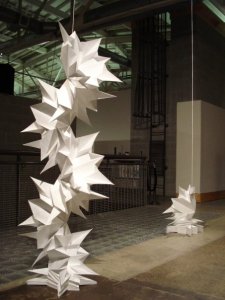
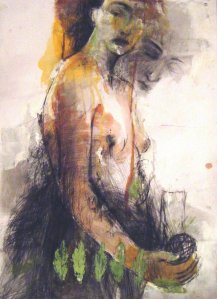
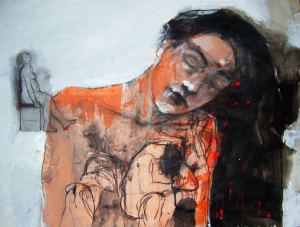










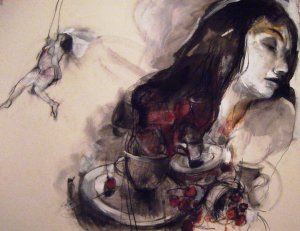

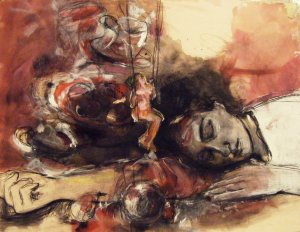

Thank you deanna .
my best
Agostino Arrivabene
“Thank you Deanna for the excellent presentation. It is very generous what you do, searching out artists’ work and giving it to others. In times like these when the art market is such a business, there are not too many who care so deeply or make efforts to really understand the creative soul. Thank you.”
Fontini, Your passion for your work and the creative process itself is reflected in your paintings. There is an immediacy in your strokes and in your expression, your compositions, that married with your incredible technique absolutely mesmerizes. Your women stay with me as I go about my day. It is a pleasure to have met you. x
Dear Deanna, thank you for this interview. Many of my friends are also excited about your magazine. We remain in contact.
Agostino, your talent is truly of another realm. Your vision is magnificent and lovely to behold. A true master in the purest tradition of the greats who have inspired you. You now, in turn, are inspiring others. Sending a kiss to you in Italy! x
Deanna, as you know I echo the words of these artists. Thank you for taking such considered time in exploring understanding in our creativity. I know I am very fortunate to have this as my first published interview – this is quite a special site. Thank you.
Isolda, It was a gift to me the day I stumbled just by accident across your lovely, haunting voice. Interviewing you, I heard that same passion in your voice as you described your dedication to your craft…The hard work you put into making your songs come across so ethereal and effortless. I will be following your career closely. x
Bravo Isolda! You are the real thing
…and a beautiful site from Deanna about artists and creativity – Isolda, she has done you proud and you know what a big admirer I am of yours!
Thank you, Jude! She is indeed a pure spirit and talent! The “Real Thing” indeed!
Thanks for pausing on your precious Sunday to read and comment here. x
Thank you Jude! I know – Deanna is clearly very special. She brings out the best in others and transcribes it for sharing with yet more others in a beautifully presented and succinct manner. And thank you, Deanna, for your humbling comments – I am glad to have met you and even happier that my music brought something of value to you.
Thank you – really, for taking an interest not just in me for this interview, but for the interest you take in all artists and their art. We are all blessed to be connected to such people as yourself, who really takes the time to listen, and time is one of the most precious things. Not only that, but in your work you connect artists from across the world with each other, and provide us with an opportunity to learn from each other. A truly wonderful contribution to our world. I see in your “About Deanna” the background to this publication and I feel blessed to have come into contact with a person as remarkable and inspiring as yourself. Thank you.
Hugs, Isolda!
Yet another wonderful exploration into the tender underbelly of the beast known by many names, here by Creativity.
Thanks, Andy! May we each learn to listen respectfully for her call to dance. And may we have the courage to respond when she holds out her hand.
Pingback: Agostino Arrivaben: Milan, Italy | Combustus Featured Artists
Pingback: Combustus 13 » Artists & Writers Who Ignited Us in 2012
Wow that was unusual. I just wrote an really long comment but after I clicked submit my comment didn’t show up. Grrrr… well I’m not writing all that over again. Anyways, just wanted to say wonderful blog!
Reblogged this on stroemenimkopf and commented:
Interview, u.A. mit Arrivabene, lesenswert